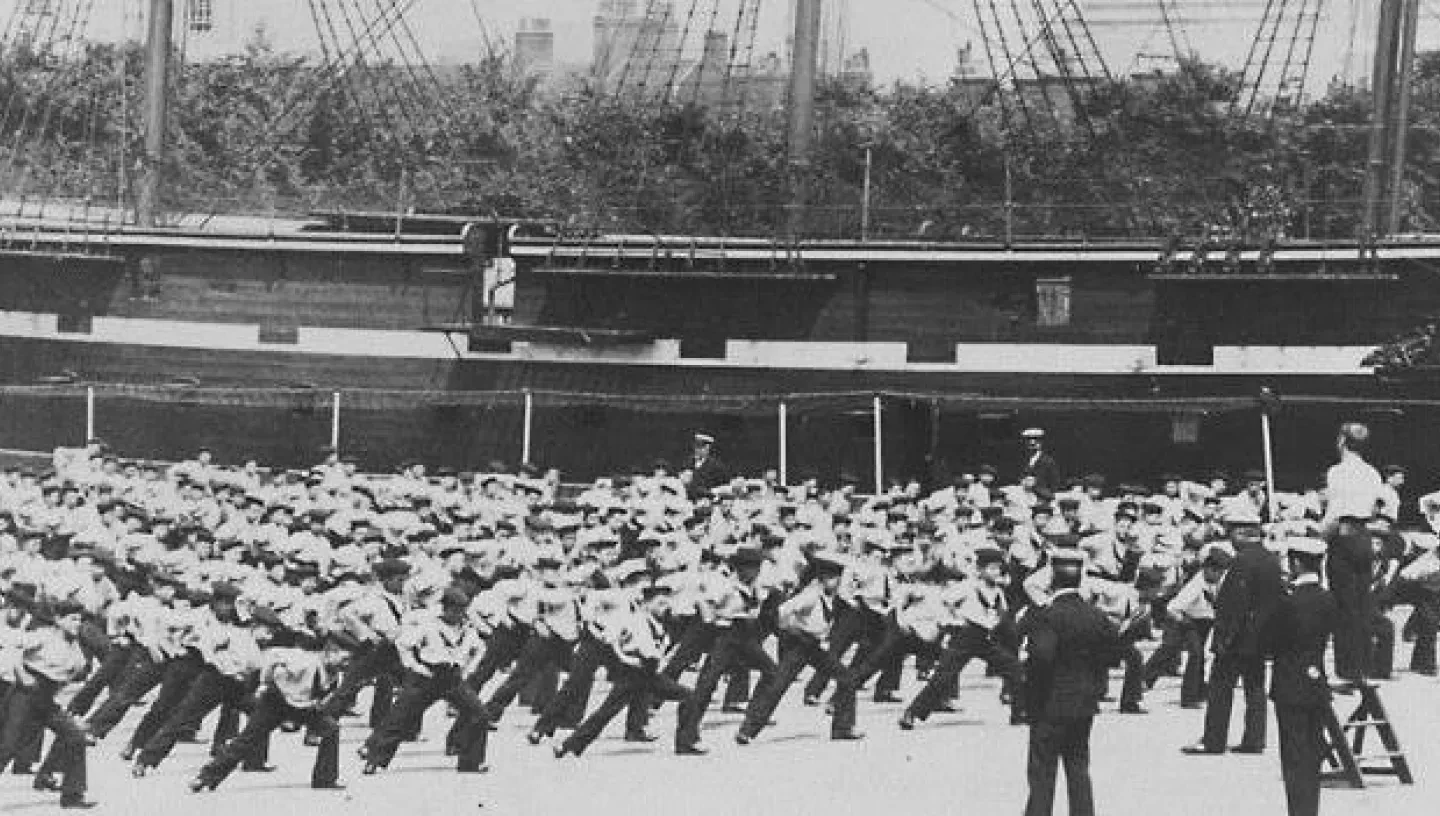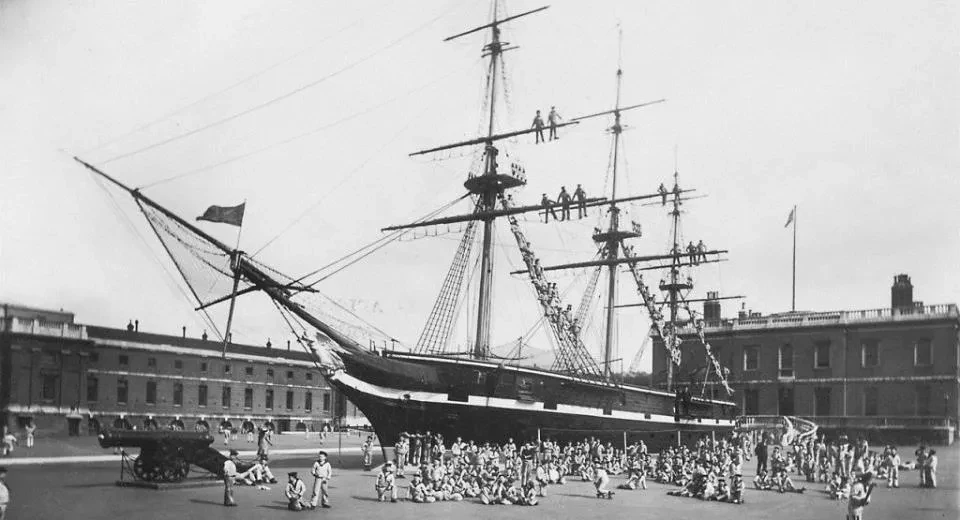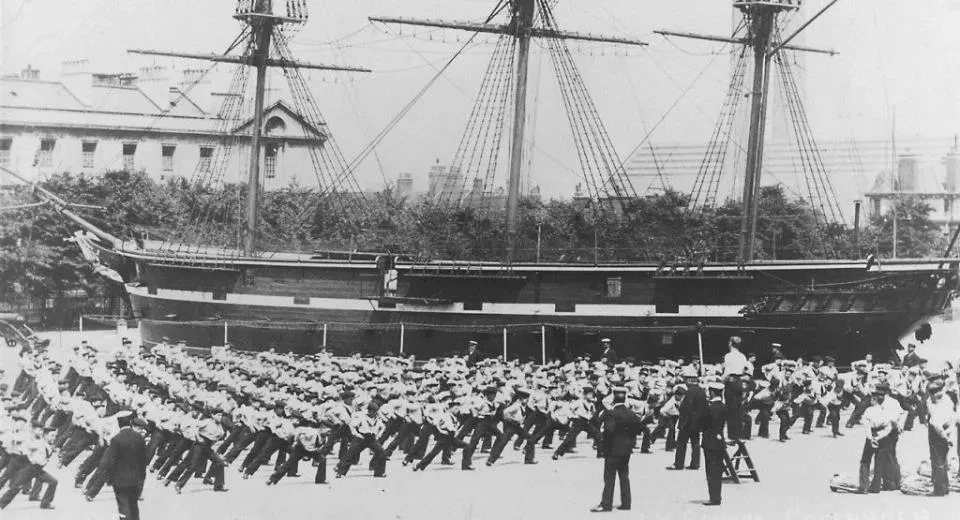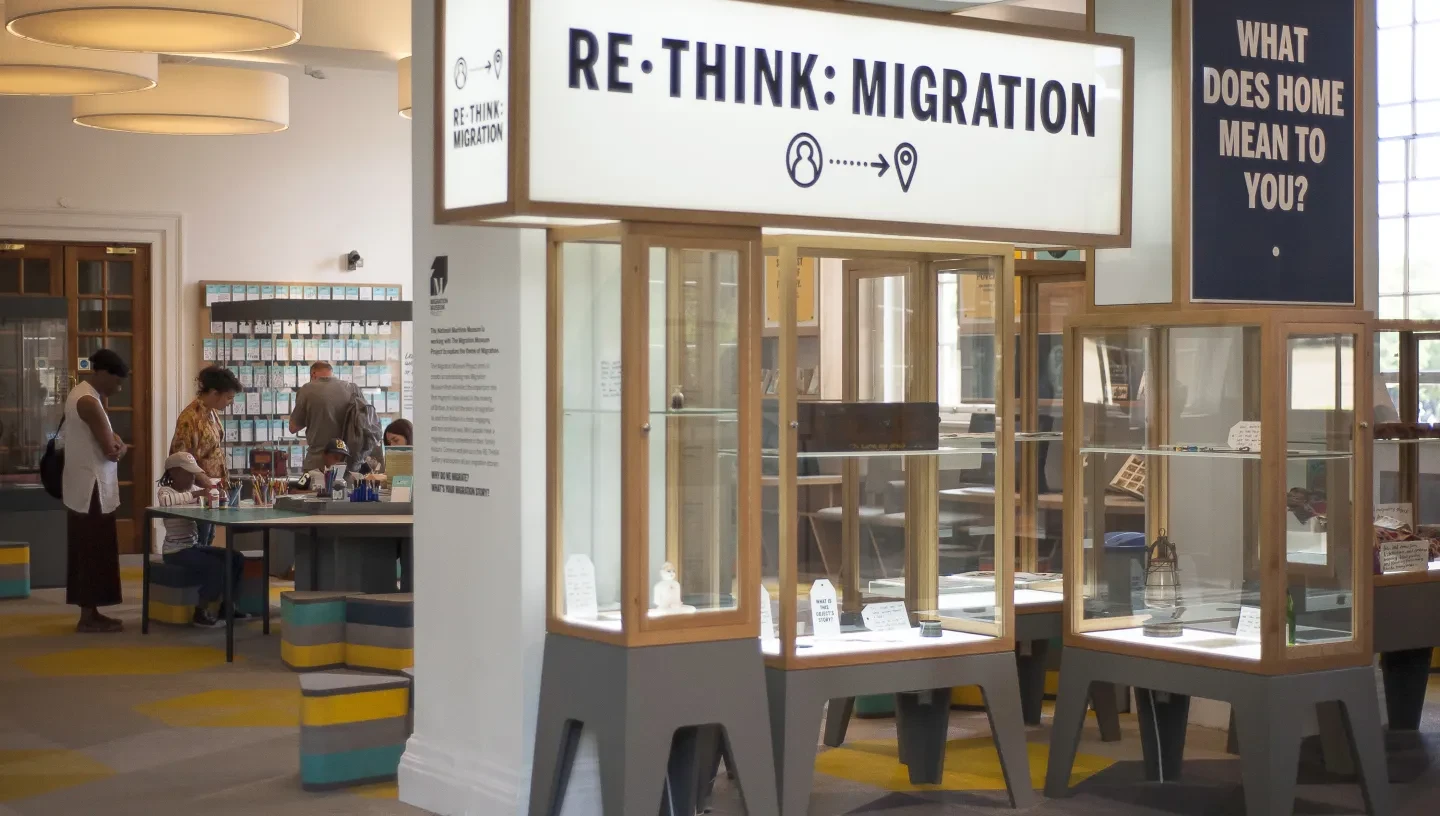
While practitioner in residence at Royal Museums Greenwich during 2016-2017, Paddy Hartley created new artwork in response to the histories of ex-servicemen in and around the National Maritime Museum, with the help of curators, archivists, conservators and the visiting public.
In this blog post written during his residency, he reveals how the stories of two World War I servicemen inspired his work.
I’ve been based here in the RE•THINK Gallery as artist in residence since June 2016, and having approached the residency with a particular focus, working in what was the Royal Hospital School has been a great reminder that when working in a new and very specific environment with a rich history, I have to be open to the possibility of a change of tack.
For over 13 years, I’ve been researching and interpreting the events surrounding the lives of facially injured WWI servicemen treated by surgical pioneer Sir Harold Gillies. Amongst the life stories I’ve been researching, two happen to be of Battle of Jutland (31 May–1 June 1916) veterans whose stories I’ve returned to for my residency. Walter Ernest O’Neil Yeo and William Vicarage served aboard HMS Warspite and HMS Malaya respectively as part of the 5th Battle Squadron under the command of Vice-Admiral Sir Hugh Evan-Thomas.
Both men sustained serious cordite burns to the face (and hands in the case of Vicarage), yet their bravery and resolve wasn't confined to those terrible days in the North Sea. The hard lessons learned and the success of the surgery both men underwent to repair their injuries, paved the way for countless thousands of others in the plastic repair of serious facial burns.
Over the years I’ve worked with the types of uniform the servicemen would have been wearing at the time of receiving their injuries. It acts as a canvas of sorts, upon which I embellish information from a wide range of sources to compose stories of pre/post injury/surgery experiences and consequences.
Last year I was fortunate to have been invited by Professor David Houston Jones at Exeter University, to revisit the story of Walter Ernest O’Neil Yeo. This allowed me to incorporate new research into Yeo’s story, and to use new outcomes including the fact that Yeo became a crossword puzzle compiler in later life.
Creating a large signaling flag crossword puzzle of Yeo’s life story, with which viewers of the work could interact felt like the culmination of many years research, and a natural end point to Walter’s story. So my focus for this residency at RE•THINK shifted to the story of William Vicarage, the Swansea watchmaker who suffered terrible burns to both the face and hands. His is the only case in which surgeon Gillies documented the reconstruction of the watchmaker’s badly burned and contorted right hand. Telling his story too at the home of the Greenwich Meridian felt like the perfect location to revisit his story, and it is, and it will be. But the story of Walter Ernest O’Neil Yeo has popped up over the horizon again and quite unexpectedly.
On one of my first days at the museum, I noticed I would pass a carved stone plaque on the external wall of the building in which the RE•THINK gallery is situated. The plaque reads:
The buildings of the museum were occupied until 1933 by The Royal Hospital School, founded in 1694 for the sons of seamen of The Royal Navy. The ashes of many of the former pupils of the school have been scattered over the lawns.
This jogged the memory that Walter Yeo had actually been a pupil here at the Royal Hospital School, Greenwich. The school admitted the sons of sailors ‘killed on duty in the service of the Crown’. As Walter’s father Francis was lost at sea along with all but three of his fellow crew in the HMS Serpent tragedy of 1890, Walter became eligible and indeed attended the school from 24 September 1902 until 25 May 1906, from which point he then was assigned as Bugler aboard the training ship HMS Ganges.

I became intrigued to find out if by remote chance, there could be photographic evidence of Walter as a pupil; or more broadly, about life as a pupil at the school. I began by searching the National Maritime Museum’s online database and other online resources, and one of the very first images I came across gave me goosebumps, that unique feeling of being very directly connected to the place and the person.

I came across an image taken in 1905 of pupils engaged in a synchronized physical exercise alongside the training ship Fame. The postcard depicted boys from Mr. Jim Bye’s Trafalgar Company and Mr. Flanagan’s No. 9 Company. The training ship was situated in the centre of the parade ground of the Royal Hospital School and to my amazement, the angle from which the shot was taken was almost exactly the same vantage point out of the window, sitting in the RE•THINK studio. Looking at the photograph, and looking at the identical view out of the window 111 years later of where the Fame once sat, it was easy to conjure up the image of the pupils exercising in time, with the added intrigue that Walter Yeo could very likely be in amongst the large group of boys in the shot. It’s these moments that make the connection between now and then almost tangible.
